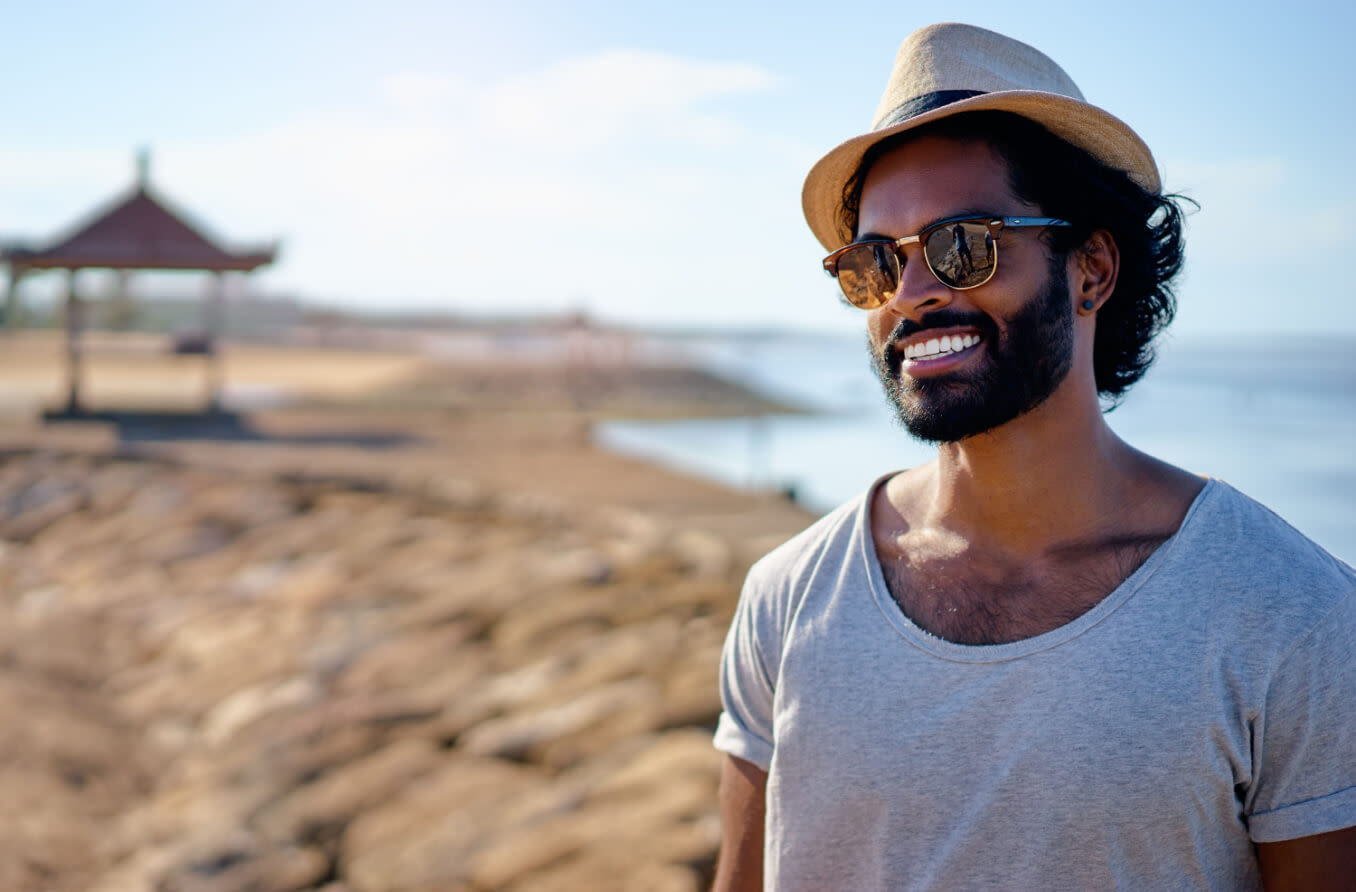UV protection sunglasses prevent eye damage

We all are aware of the risks of sunburn and skin cancer from the sun's ultraviolet (UV) radiation, but did you know UV and other radiation from the sun also can harm your eyes?
Extended exposure to the sun's ultraviolet rays has been linked to eye damage, such as cataracts that can cause vision loss.
Moreover, new research suggests the sun's high-energy visible (HEV) radiation (also called "blue light") may increase your long-term risk of macular degeneration.
Dangers of ultraviolet radiation to your eyes
To protect your eyes from harmful solar radiation, sunglasses should block 100 percent of UV rays and also absorb most HEV rays.
Frames with a close-fitting wraparound shape provide the best protection because they limit how much sunlight reaches your eyes from above and beyond the periphery of your sunglass lenses.
HEV radiation risks
As the name suggests, high-energy visible (HEV) radiation, or blue light, is visible. Although HEV rays have longer wavelengths (400-500 nm) and lower energy than UV rays, they penetrate deeply into the eye and can cause retinal damage.
According to a European study published in the October 2008 issue of Archives of Ophthalmology, HEV radiation — especially when combined with low blood plasma levels of vitamin C and other antioxidants— is associated with the development of macular degeneration.
Kids need UV protection even more than adults
The risk of damage to our eyes and skin from solar UV radiation is cumulative, meaning the danger continues to grow as we spend time in the sun throughout our lifetime.
With this in mind, it's especially important for kids to protect their eyes from the sun. Children generally spend much more time outdoors than adults.
In fact, some experts say that because children tend to spend significantly more time outdoors than most adults, up to half of a person's lifetime exposure to UV radiation can occur by the age of 18.
Children are also more susceptible to retinal damage from UV rays because the lens inside a child's eye is clearer than an adult lens, enabling more UV rays to penetrate deep into the eye.
Therefore, make sure your kids' eyes are protected from the sun with good quality sunglasses or photochromic lenses when they go outdoors. Also, encourage your child to wear a hat on sunny days to further reduce UV ray exposure.
Sunglasses that protect your eyes from UV And HEV rays
To best protect your eyes from the sun's harmful UV and HEV rays, always wear good quality sunglasses when you are outdoors.
Look for sunglasses that block 100 percent of UV rays and that also absorb most HEV rays. Your optician can help you choose the best sunglass lenses for your needs.
To protect as much of the delicate skin around your eyes as possible, try at least one pair of sunglasses with large lenses or a close-fitting wraparound style.
Depending on your outdoor lifestyle, you also may want to explore performance sunglasses or sport sunglasses.
The amount of UV protection sunglasses provide is unrelated to the color and darkness of the lenses.
For example, a light amber-colored lens can provide the same UV protection as a dark gray lens. Your eye care professional can verify that the lenses you choose provide 100 percent UV protection.
But for HEV protection, color does matter. Most sunglass lenses that block a significant amount of blue light will be bronze, copper or reddish-brown.
Again, your optician can help you choose the best "blue-blocking" lenses.
In addition to sunglasses, wearing a wide-brimmed hat on sunny days can reduce your eyes' exposure to UV and HEV rays by up to 50 percent.
More tips about sunglasses and UV exposure
Many misconceptions exist about the right sun protection for your eyes. Keep these tips in mind:
Not all sunglasses block 100 percent of UV rays. If you're unsure about the level of UV protection your sunglasses provide, take them to your eye doctor or optician for an evaluation.
Remember to wear sunglasses even when you're in the shade. Although shade reduces your UV and HEV exposure to some degree, your eyes will still be exposed to UV rays reflected from buildings, roadways and other surfaces.
Sunglasses are important especially in winter. Since fresh snow can reflect 80 percent of UV rays, nearly doubling your overall exposure to solar UV radiation, you should wear sunglasses when skiing or just playing in the snow. If you ski or snowboard, choosing the right ski goggles is essential for UV protection on the slopes.
Even if your contact lenses block UV rays, you still need sunglasses. UV-blocking contacts shield only the part of your eye under the lens. Wearing sunglasses protects these delicate tissues and the skin around your eyes from UV damage.
If you have dark skin and eyes, you still need to wear sunglasses. Although your dark skin may give you a lower risk of skin cancer from UV radiation, your risk of eye damage from UV and HEV rays is the same as that of someone with fair skin. As long as you have proper eye and skin protection to reduce your UV exposure, you don’t have to fear the UV rays.
Ready to get your sunglasses?
Find an eyewear shop nearby or online to pick your UV-blocking lenses and frames.
Page published on Thursday, 28 February, 2019






